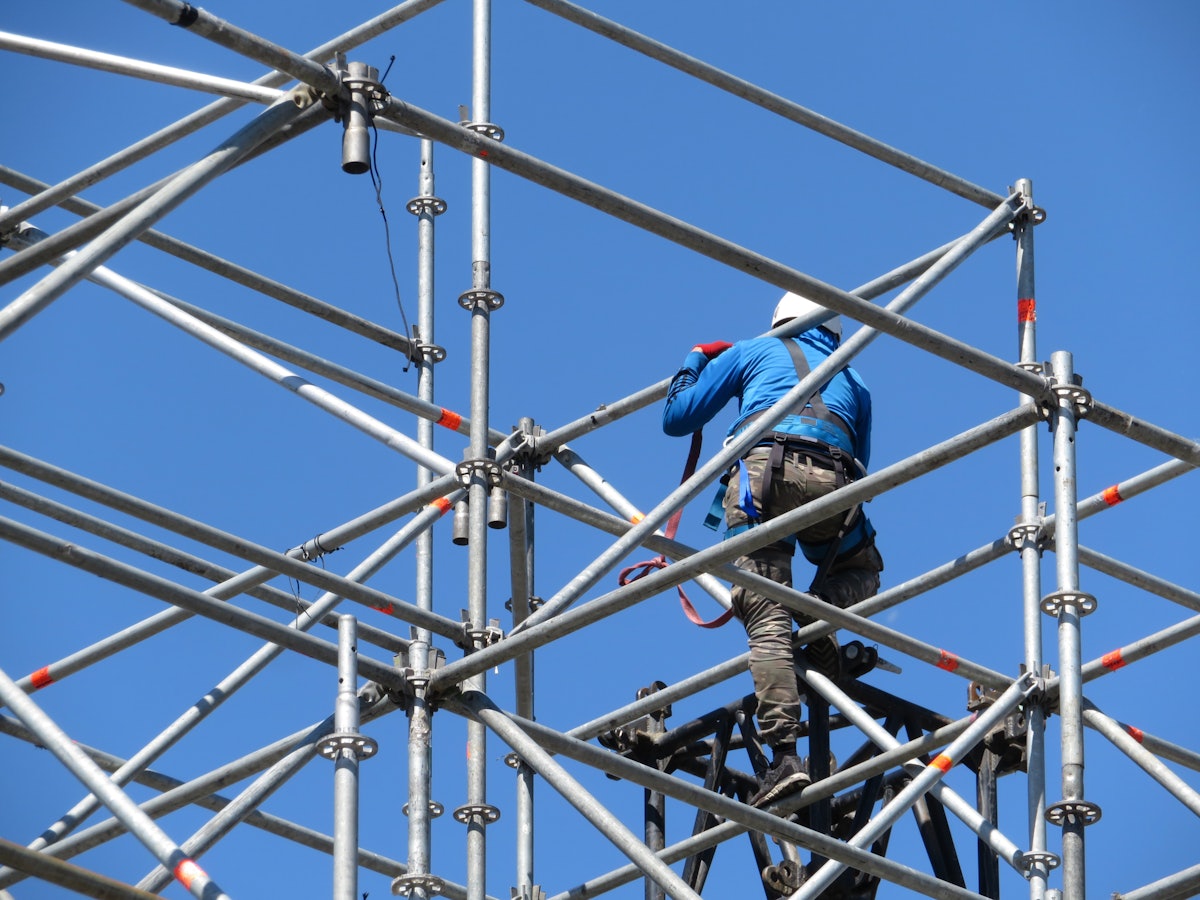Temporary Roof Scaffolding Experts Providing Secure and Reliable Installations
Temporary Roof Scaffolding Experts Providing Secure and Reliable Installations
Blog Article
Checking Out the Numerous Kinds Of Scaffolding Used in Building Tasks
The building sector depends heavily on numerous kinds of scaffolding to satisfy specific project demands, each offering distinctive benefits and applications. Typical structure scaffolding supplies a durable structure for general jobs, while suspended scaffolding is essential for job on high-rise frameworks.

Standard Structure Scaffolding
Traditional frame scaffolding is among one of the most extensively made use of methods in the building and construction industry as a result of its robustness and convenience. This system includes straight and upright frameworks that are set up to produce a steady system for employees and products. The primary parts consist of upright posts, horizontal journals, and diagonal braces, which with each other offer a solid structure that can support significant lots.
One of the key benefits of traditional structure scaffolding is its flexibility to different building projects, varying from property buildings to big commercial frameworks. The modular design enables simple assembly and disassembly, making it reliable for both short-term and lasting projects. Furthermore, the system can be tailored in height and size, accommodating different structure layouts and site problems.
Security is critical in scaffolding applications, and typical frame systems are furnished with guardrails and toe boards to avoid drops and guarantee employee protection. Moreover, normal assessments and adherence to safety and security policies are critical in preserving the stability of the scaffold. Overall, standard frame scaffolding continues to be an essential selection in the building and construction industry, giving a reputable system for labor and enhancing total project effectiveness

Suspended Scaffolding
Suspended scaffolding offers a distinct service for building projects that require accessibility to raised surfaces, particularly in scenarios where traditional structure scaffolding might be not practical. This kind of scaffolding is typically put on hold from the roof covering or top levels of a framework, making use of a system of pulleys, systems, and ropes to produce a working room that can be adapted to various elevations.
One of the key benefits of suspended scaffolding is its adaptability. It can be conveniently repositioned or lowered to suit adjustments in building needs, making it excellent for tasks such as window installation, frontage work, and maintenance on skyscrapers. In addition, the minimal impact of suspended scaffolding enables for better use ground room in urban settings, where space is typically minimal.
Security is a crucial factor to consider in using put on hold scaffolding. Correct rigging and anchoring systems need to be employed to make sure security and prevent crashes. Operators must likewise be learnt the secure use of this tools. In general, put on hold scaffolding offers a reliable and efficient solution for accessing hard-to-reach locations in various building circumstances, enhancing both efficiency and safety and security on site.
System Scaffolding
System scaffolding, usually considered as a modern solution in the scaffolding industry, is composed of pre-engineered elements that can be swiftly constructed and adjusted for numerous building and construction tasks. Scaffolding. This sort of scaffolding is defined by its modular style, which permits flexibility and efficiency on job sites, accommodating different elevations and architectural needs
Usually made from high-strength steel or aluminum, system scaffolding provides enhanced durability and security. The parts include vertical blog posts, straight ledgers, and diagonal dental braces, which interconnect securely, making sure a robust framework. The layout usually integrates standardized installations, streamlining assembly and disassembly procedures, consequently decreasing labor time and costs.

Rolling Scaffolding
Rolling scaffolding is a flexible option to standard set scaffolding, created for flexibility and convenience of usage on building and construction websites. This sort of scaffolding is composed of a platform sustained by frameworks with wheels, enabling workers to quickly move it as needed. The mobility feature considerably improves productivity, as it decreases downtime connected with dismantling and setting up taken care of scaffolding.
Generally created from light-weight products such as aluminum or steel, rolling scaffolding offers a tough yet mobile option for projects calling for regular repositioning - Scaffolding. It is especially advantageous in tasks such as painting, drywall installation, and electrical work, where accessibility to various elevations and areas is needed
Security is vital in rolling scaffolding style, with features such as securing wheels to stop unintended activity when being used, and guardrails to protect employees from falls. In addition, lots of models are flexible in height, fitting numerous visit this web-site job demands.
Cantilever Scaffolding

The layout of cantilever scaffolding typically involves using brackets or arms anchored to a building or structure, enabling the system to prolong exterior securely. Safety is critical; thus, these scaffolds must be engineered to stand up to numerous tons and ecological problems. Regular inspection and upkeep are necessary to ensure architectural stability and worker safety.
Cantilever scaffolding is preferred for its convenience and effective use of space, making it a preferred option in urban settings where area constraints are usual. In addition, it assists in simpler access to high altitudes, ultimately adding to the general efficiency of construction tasks. As with all check scaffolding kinds, proper training and adherence to safety and security standards are essential for workers making use of cantilever scaffolding.
Final Thought
In verdict, the diverse sorts of scaffolding utilized in building tasks each serve unique purposes tailored to particular website needs. Traditional frame scaffolding offers stability, while suspended scaffolding offers flexibility for elevated jobs. System scaffolding helps with quick assembly, and rolling scaffolding improves flexibility for differing workplace. Cantilever scaffolding effectively deals with challenges in city settings. Comprehending these scaffolding kinds is essential for enhancing security and performance in construction, ultimately contributing to the effective conclusion of tasks.
Traditional framework scaffolding provides a sturdy foundation for basic jobs, while put on hold scaffolding is crucial for job on skyscraper frameworks.Moving scaffolding is a versatile basics alternative to traditional fixed scaffolding, created for flexibility and ease of usage on building websites. As with all scaffolding types, proper training and adherence to security requirements are crucial for workers making use of cantilever scaffolding.
Conventional frame scaffolding provides security, while put on hold scaffolding provides versatility for raised tasks. System scaffolding helps with quick setting up, and rolling scaffolding improves movement for differing job settings.
Report this page